
Morgan Blair’s live/work studio is located in a converted two-story garage in Ridgewood, Queens. The neighborhood is quiet and the building is largely inconspicuous despite her recent foray into murals. We talked about her process where texture and masking dominate and where she sources her imagery from (Youtube tutorials, Seinfeld and Cheetos to name a few). In our short time in her work space, we got a glimpse into her massive VHS collection and a few of the quirks in her studio including a CD rainbow that occurs at 3pm everyday.
has shown at Greenpoint Terminal Gallery, Nudashank, and White Walls Gallery. Her work is included in the group show which runs until Oct 2.
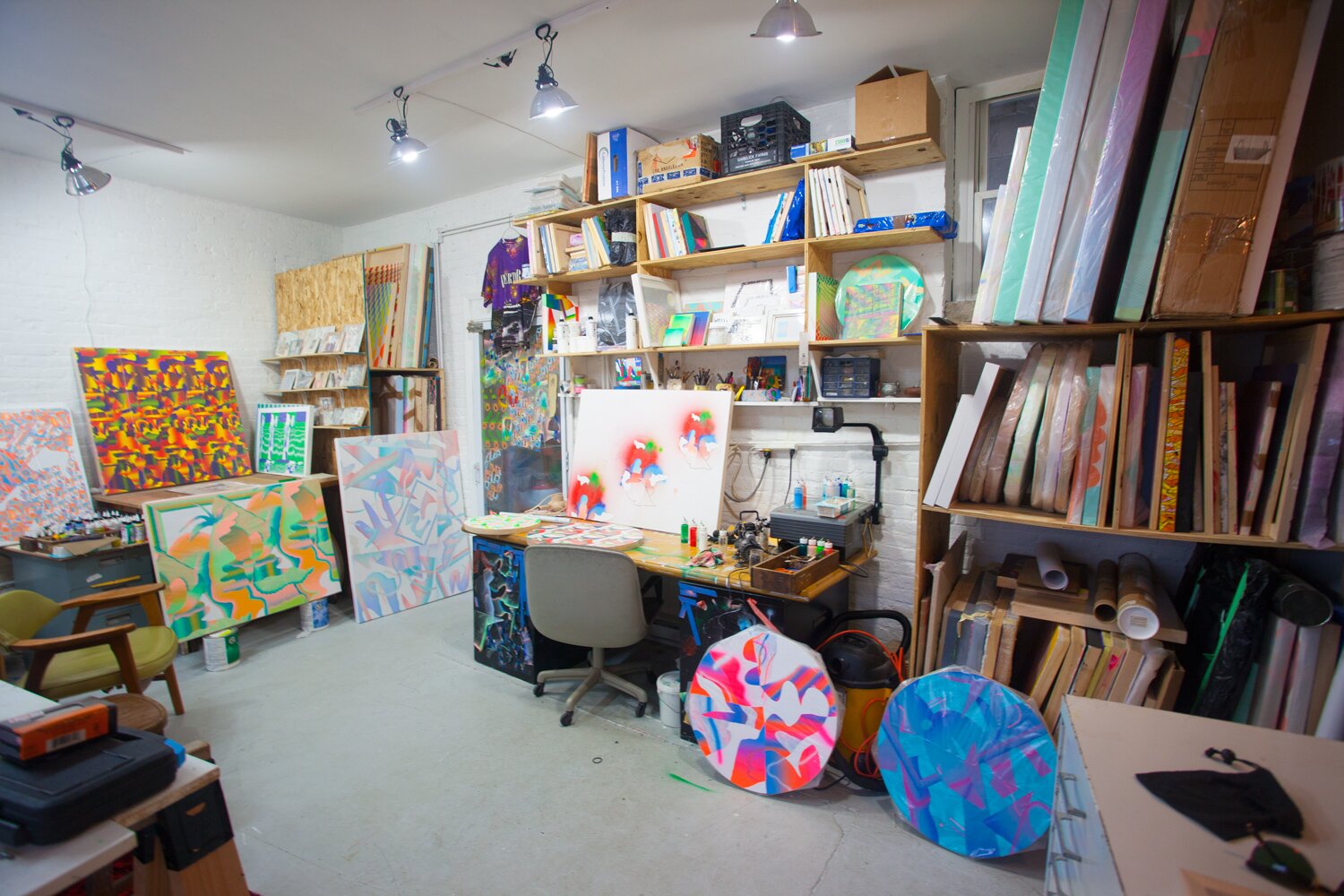
F: First, how do you start your paintings?
MB: I often start on the internet looking around for an image that I think could be interesting abstracted and/or repeated in a pattern. I go through phases of collecting screenshots from people’s homemade tutorial videos on youtube where someone is demonstrating how to do a craft project or cook a certain food. There are usually some good close-ups on the person’s hands doing something where the whole situation becomes slightly obscured and ends up looking like mostly abstract shapes but with some recognizable elements like fingers or fruit or something. Sometimes I look specifically for tutorials on fruit-based projects, like how to make your own edible arrangement, or how to carve a flower out of a watermelon. There’s also a website I love where people post photos with step-by-step instructions for how to do really specific things. Some of them are amazing because they’ll be like someone’s blurry photos unironically showing how to make a piece of toast which looks like total shit in the end. I found one, I forget what the end result was supposed to be, but the instructions involved soaking a smashed brick of ramen noodles, crushing up a bag of cheetos and then dumping the waterlogged noodles into the bag of crushed up cheetos and squishing it all around together until it was a paste, and then like rolling it into a log to eat. I think it was someone’s totally earnest, alternative burrito invention. So, part of my process is getting distracted by stuff like that in the beginning. Then I play around with the image in photoshop and come up with a pattern, project and trace it onto my surface, and start filling in the shapes. The rest of the time, when all that planning out feels unsatisfying, I just draw a pattern piece by piece onto the surface without knowing what it will be, which is a lot harder for me and makes me spend a lot more time looking at it and thinking.
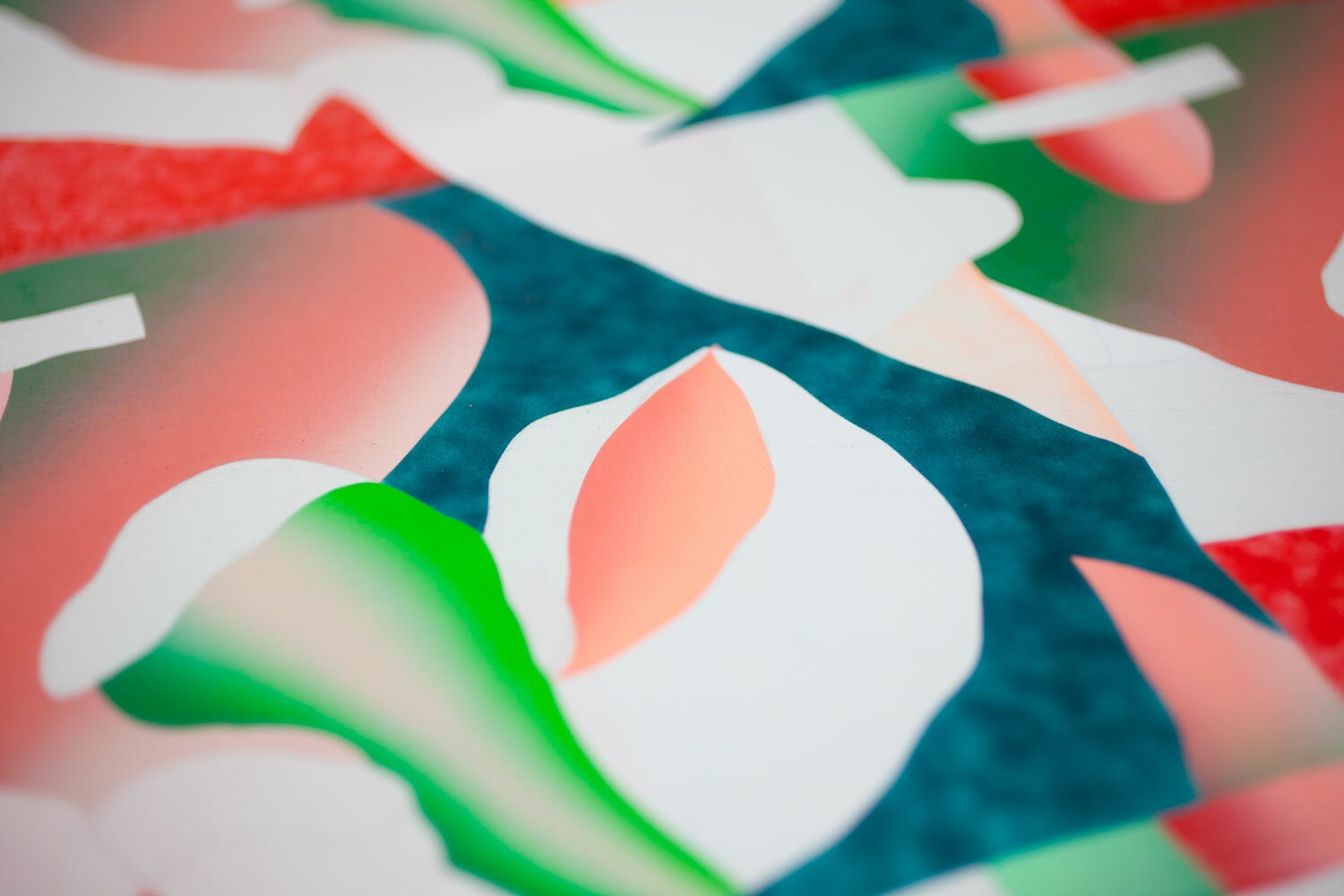
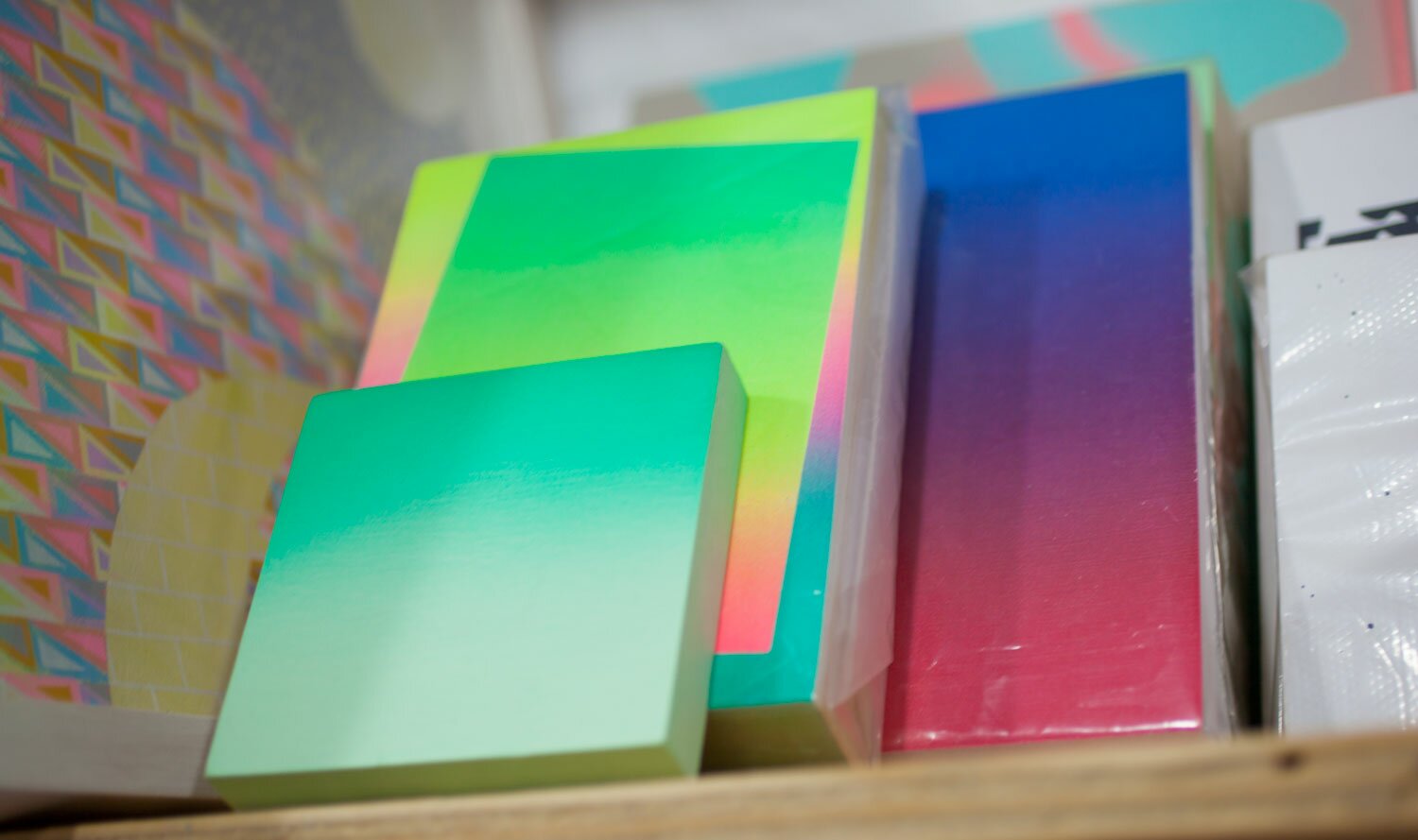
F: There are these textural elements to your paintings that feel very organic and painterly that contrast with the hard edge gradients. How does that fit into your process? Do you start digitally and then paint? How do the painterly textures come about within your process?
MB: The sandy textures I sometimes use are there to interrupt and contrast the flatness of the rest of the painting and introduce a different kind of space. I also tend to use the airbrush to make scribbly, mottled-looking but flat areas of pattern that might end up looking like they’re in from a second-life scene or video game. I like using that kind of texture to mimic sections of blurry background from whatever image I’m referencing. I usually think a few steps ahead about where the sections of texture will be, so I don’t forget that I want them in there and just plow through them with flat gradients.
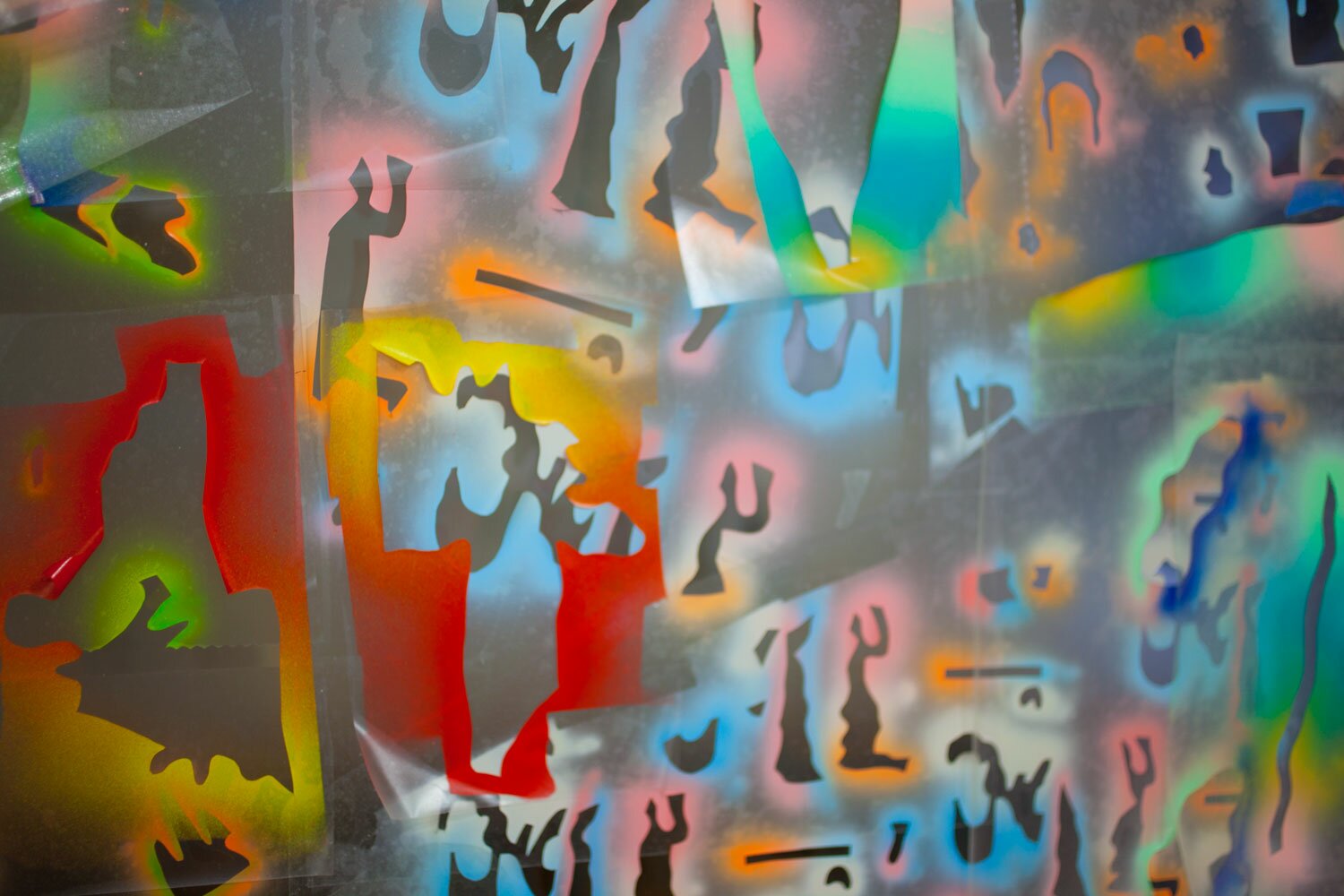
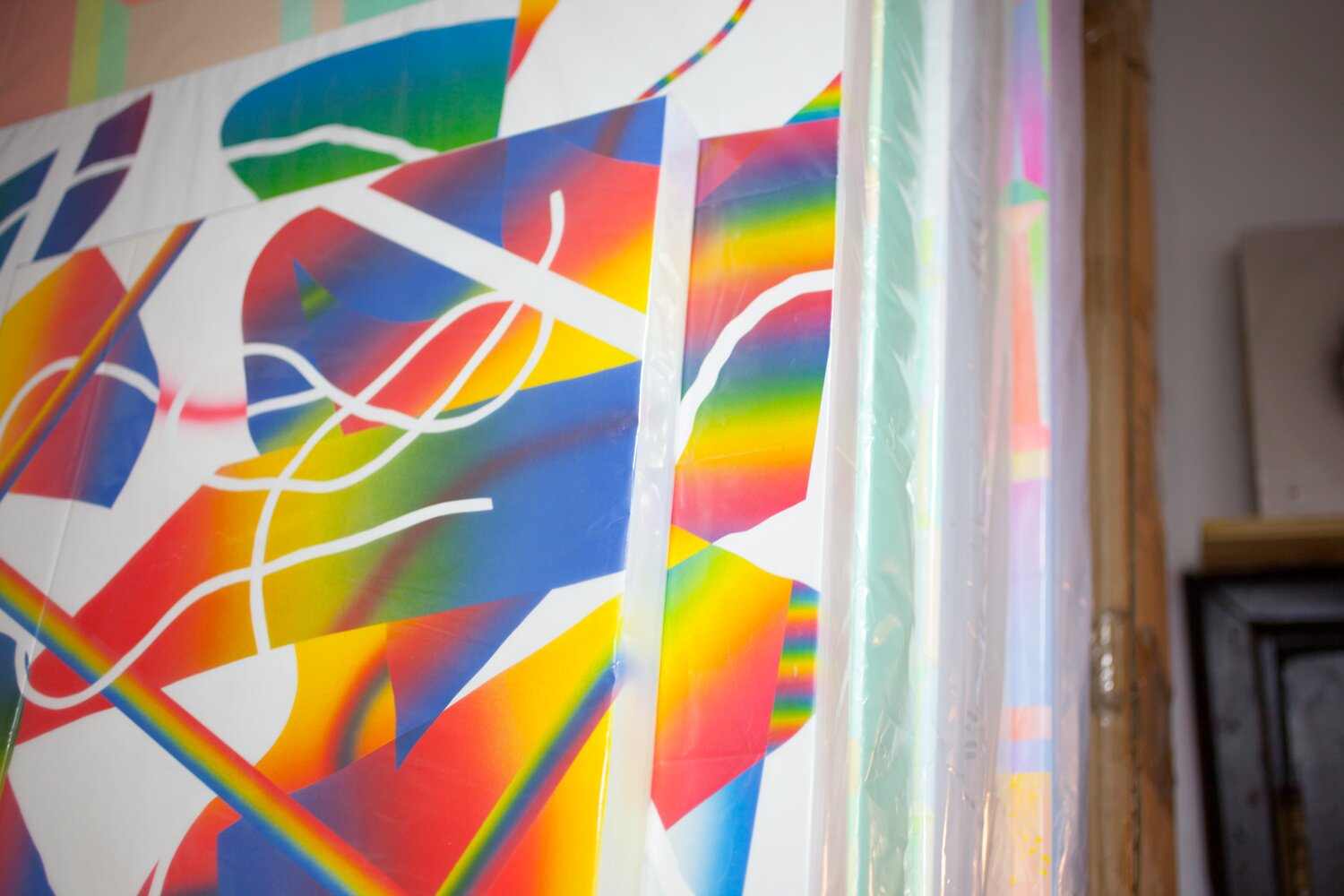
F: The shapes in your paintings are very reminiscent of 80s and 90s textile patterns with some pieces like Helen Hunt’s 1968 Snow Globe Containing Vision of Future 1994 Grocery List, Mariah Carey CD and Quack is Wack actually having a repeating pattern. Even the color palette feels very retro. Can you talk about how the abstract shapes are formed as well as how you choose your color palettes?
MB: The shapes in my work are either abstracted from whatever screenshot or still I’m working from, or made up out of nowhere as I work, as in the two pieces you mentioned. In the latter case, it usually happens more easily if I have the pressure and parameters of a specific encroaching deadline with a topic attached (such as, “ducks”), that forces me to come up with something without over-thinking it. Otherwise, if I’m working off an image from the internet, I usually trace and retrace the shapes in the image, first in photoshop, then onto acetate, then onto my surface, so they get looser and more morphed every time they are retraced. That way I can start to let go of the original image any impulse to accurately reproduce it. Color palettes are generated somewhat randomly without too much thought. I just kind of shuffle around bottles of paint until I have a combination that feels new. Or, sometimes I lift color palettes off of video covers or clothes I have.

F: There are a variety of different shaped panels that you use for your paintings including squares, rectangles, and circles. Can you talk a little bit about this decision?
MB:I started using shaped panels when my friend offered some to me that he had made and didn’t have a use for. I don’t have any conceptual reason for using them that relates to my subject matter, but I like switching up the format for variety’s sake and being able to hang the circular panels so the imagery and patterns on them can be more immediately recognizable or less, depending on the orientation of the circle.
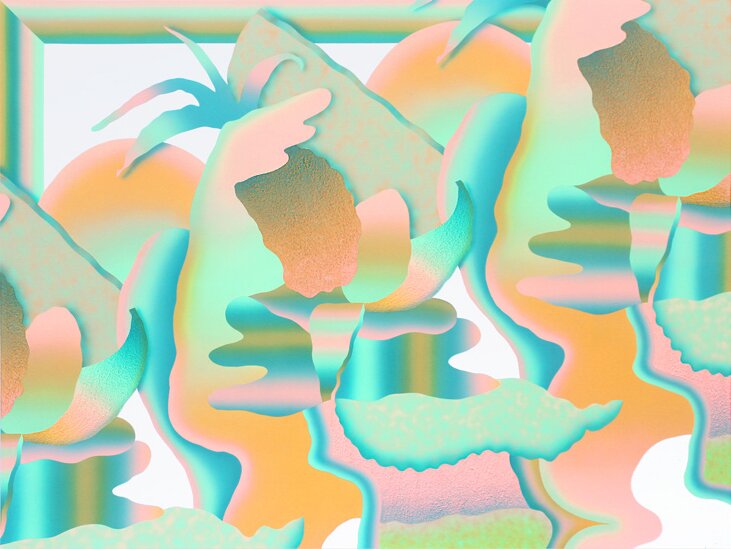
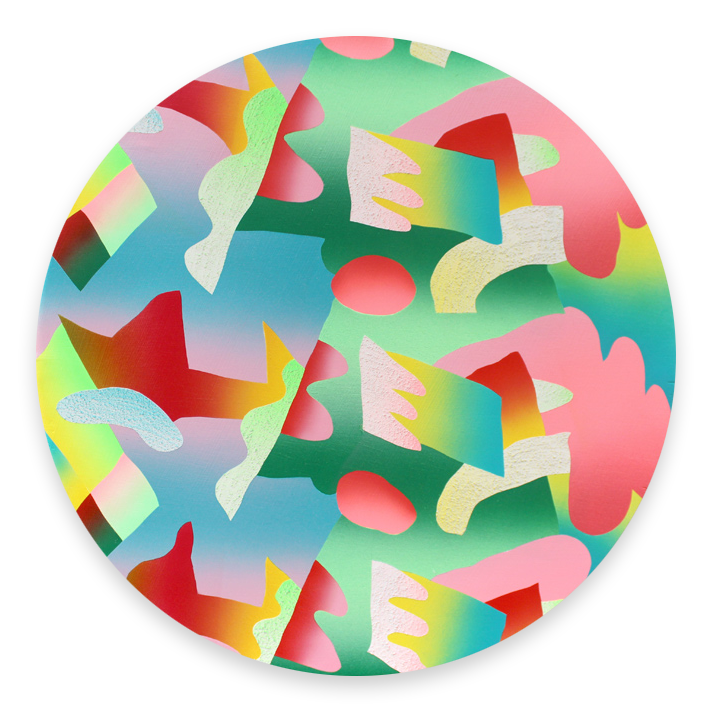
F: Since this is a studio visit blog, can you describe your studio space?
MB: I share a live-work space with my boyfriend, in Ridgewood, Queens. It’s a two-story garage with a side room that we made into a kitchen. Out front is a big driveway that houses all our landlord’s junk, and where Nick built a shed and a quarter pipe and a compost bin and some garden beds for tomatoes. Inside, the bottom floor is our studio. The front wall has sections that open up barn door-style, and in between those is a section of glass bricks that let in some good light. We’ve kind of divided the room into our own halves, with my half towards the back.
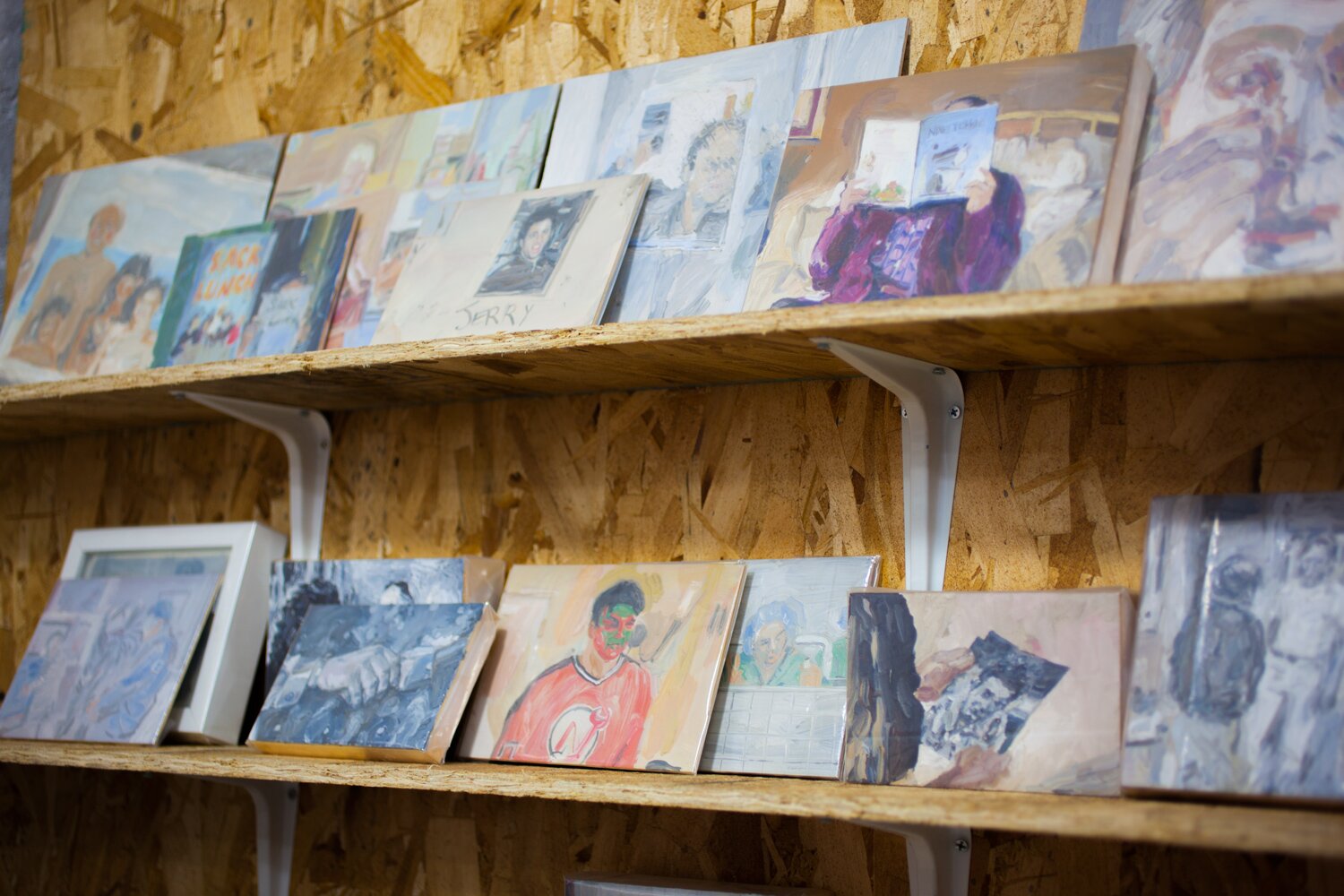
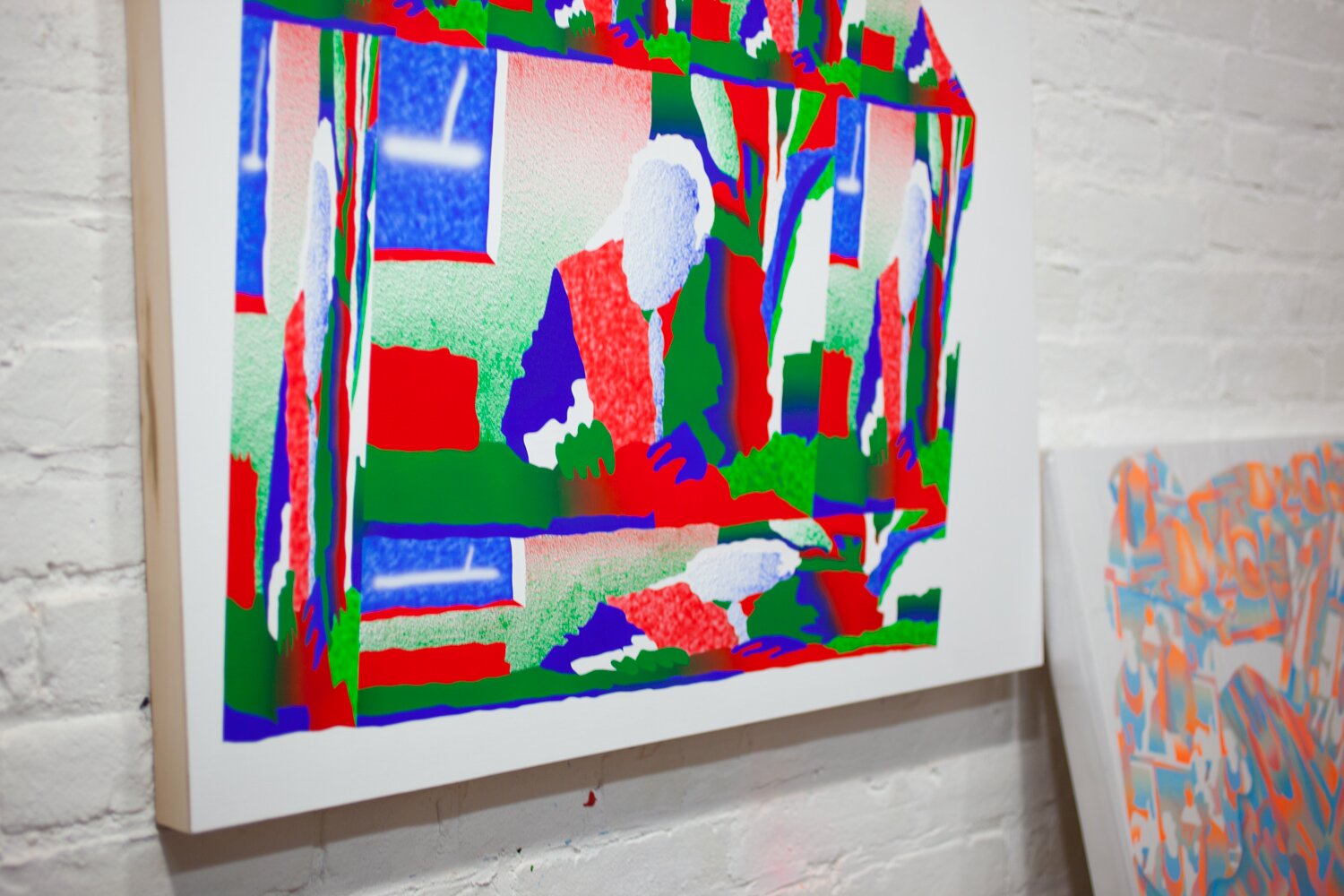
MB: On my back wall is a glass door that opens to a very shallow alley between our building and the next building, where there’s a bunch of bricks and other refuse. We started seeing an awesome orange cat back there so we dragged a tv cabinet off the street and wedged it back there and made it into a cat hotel with little nest-beds, two egresses, plastic sealing it all in, the works. Duffles, the orange cat, hunkered down there a lot this past winter, which was super cool because we could watch him nap through the glass door. And once a huge raccoon came through. Other than that… there’s just a bunch of ordinary art stuff around – lots of shelves with supplies and books, paint, etc. My flat files miraculously fit exactly, like within a half inch, against a little stretch of wall between the bathroom and the end of the wall next to the stairs. The surface of the flat files is the main resting place for stuff on it’s way to a more permanent location. Currently there are Pat Berran and Ben Sanders paintings waiting to be hung, a few small paintings of ours, a jar of red sand from Utah, a bone, a bike light, a dish of rocks, a bag of sage, three disposable cameras, a deck of cat cards, and two piles of books. There’s a cd on the little window sill in the corner of Nick’s side of the studio that casts a big rainbow onto the wall and ceiling every day around 3, which is cool. Overall the whole place has a good, do-whatever-you-want feel.
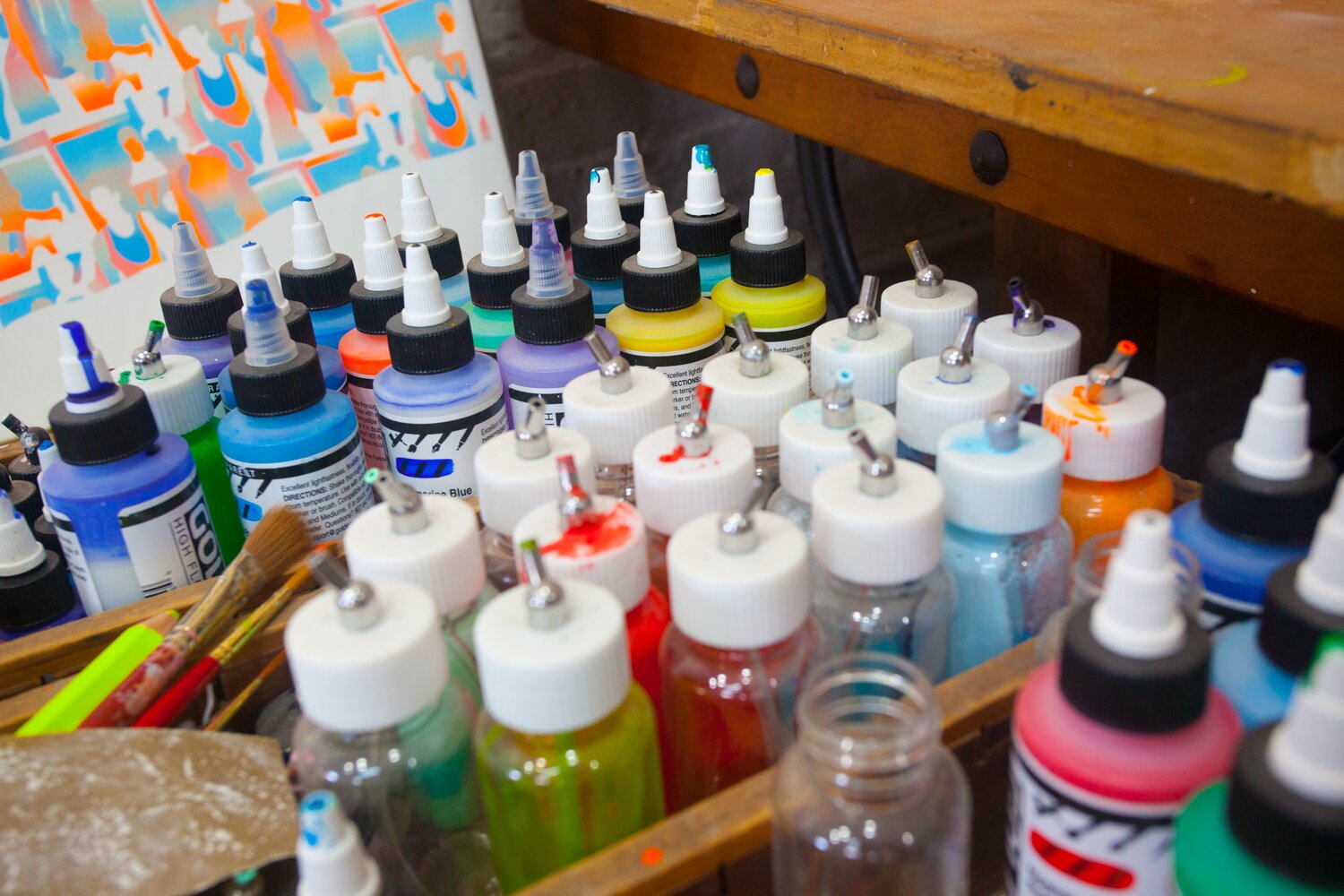

F: How long have you been here and what do you look for in a workspace?
MB: We’ve been here one year now. Before that, I still lived in Ridgewood but had a studio in our friend Maya’s space in Williamsburg, which was fun, too. But, since I got a job a few years ago I started wishing I could have my studio at home again (or, live at my studio?), so it would be easier to get into my own work at the end of the day without debating with myself all the time if I had the energy to go to the studio after work. With our situation now, I like being able to work late without then having to bike half an hour home when I’m already tired. And I like having access to my whole vhs collection to watch while I work if I feel like dragging the tv/vcr downstairs. Being in New York, of course the most important thing I look for in a workspace is a good price per square foot, which is so hard to find now and inspires rage every time I have to look for a new spot. But, this place is pretty cheap and all the outdoor space and our weird and quiet surroundings are nice. The light and temperature are decent, too. If I was in a place where I had choices beyond the most basic functionalities, I might allow myself to indulge in the fantasy of some additional studio features such as 5,000 more square feet and a cat sanctuary.

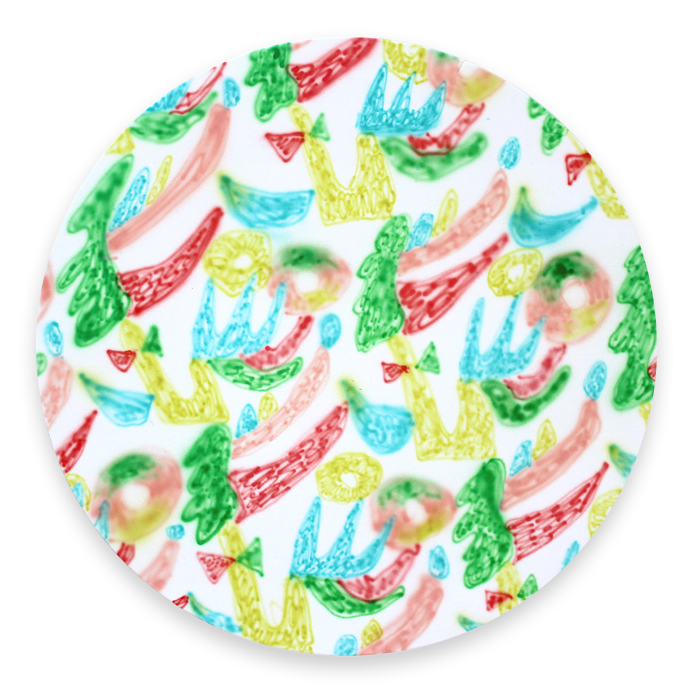
F:What does an average day in studio look like?
MB: When I have the whole day to work and am in the middle of a painting I pretty much just hunker down and spend all day going between cutting and sealing contact paper, filling in those shapes with the airbrush, peeling off the contact paper (my favorite part, maybe even the true secret motivation behind the whole endeavor), and continuing on the next layer of shapes. When I’m not in the middle of a painting, I dick around a lot with other stuff like emails and plants and cleaning and other projects before I can force myself to start something new.
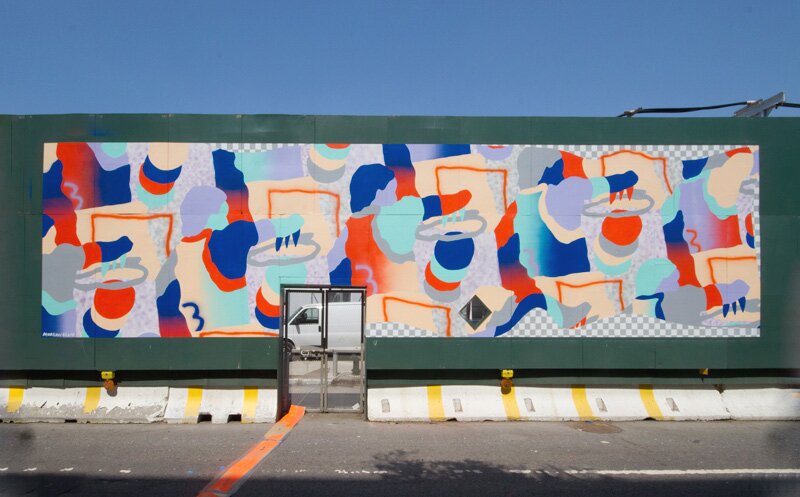
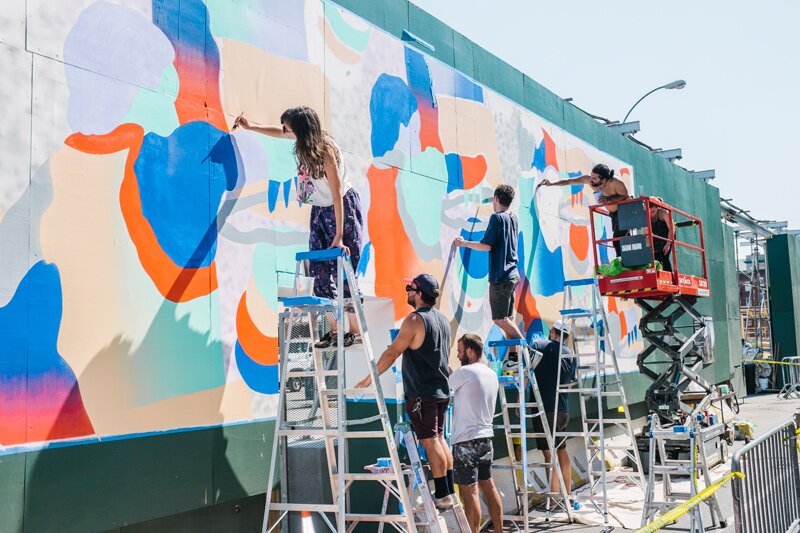
F: What are you working on next?
MB: I just painted a mural in Prospect Heights, went on vacation in some western states, and overhauled my website which were all long-impending projects, so now I have to face my plans of starting a painting based on someone doing a weird strawberry finger-puppet thing on youtube. Then I’m in a little group show at Good Work Gallery opening in early October. Then I’m going Portland, Maine in early/mid October to paint a mural there, and then I have to think about making some new work for a small group show I’m in at Left Field in CA, in March.

You can check out more of Morgan Blair’s work at her website




